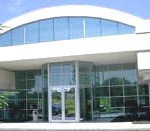
[Updated Oct 2020] A guide to executive suites and office space for rent in Buffalo as well as general information that may be useful if you are thinking of renting offices in Buffalo.
For further offices information or to search office space for rent in Buffalo just click. Or contact us for any other query.
History & Geography
Buffalo is the second-largest city in the state of New York and one of the most economically dynamic in the region. The city is located on the eastern shore of Lake Erie in the western part of the state. Buffalo lies near the head of the Niagara River right across from the Canadian city of Fort Erie, Ontario. Prior to settlement by Europeans, the area was inhabited mostly by the Iroquois tribe. The first settlers in the region were French, who established a settlement near Buffalo Creek, from which the city later derived hits name. This settlement was evacuated during the French and Indian War and later in 1763, the British took control of the entire area. In 1789 traders set up a log cabin store, the first structure of what would become Buffalo. Dutch investors then purchased the area and sold land parcels to settlers. In 1804 the design of Buffalo was laid out, using a radial street pattern, as opposed to the straight grid pattern used by most American cities. During the War of 1812, Buffalo was almost entirely burned to the ground by the British, however, after the war, it was rebuilt fairly quickly. The Erie Canal was finished in 1825 with Buffalo located at its westernmost end. The construction of the canal increased commerce greatly and Buffalo’s population skyrocketed. In 1832 it was incorporated as a city. By the 20th century, Buffalo was a thriving city with a population made up of immigrants from Ireland, England, Italy, Germany and Poland. Many worked in the steel and grain mills which fueled the city’s economy. However, Buffalo declined in importance in 1957 with the opening of the St Lawrence Seaway, meaning goods could bypass Buffalo. Eventually, the city’s population declined by almost 50 percent. In the 21st century, Buffalo also suffered economically, however in the last few years due to redevelopment and economic stimulus the city’s fortunes are gradually changing.
Economy
Traditionally Buffalo’s economy has been based on railroad commerce, automobile production and steel manufacturing. However much industry has left Buffalo, though there are still a few small steel mills running. The city has had to diversify in order to survive and now relies on a mixture of light manufacturing, high technology and service industries. In the last decade, Buffalo has had a fairly high unemployment rate, higher for example than the average rate in the state of New York. Manufacturing especially has been steadily shedding jobs over the last decade. However other fields have been starting to prosper, like education and health services and financial services. Many major banks such as Bank of America, Citigroup, HSBC Bank USA and KeyBank have major operations in the city. Buffalo has also recently become a major centre for the debt collection industry. Additionally, Buffalo is now also a centre for human genome research as well as bioinformatics. The Buffalo Niagara Medical Campus is among the most respected medical research facilities in the country along with the Hauptman-Woodward Medical Research Institute.
Tourism & Culture
While Buffalo certainly does not have a thriving tourist industry, the city has a unique culture all its own and enough sites and attractions to satisfy most visitors. Currently, the city is working on building a tourist attraction around the waterfront, which will eventually include shops, eateries and high-rise condominiums. Meanwhile, Buffalo is home to more public art galleries than most American cities, boasting over 50. The Albright-Knox Art Gallery is the most prominent and is home to one of the best collections in the region. Many visitors also come to Buffalo to partake in the Allentown Art Festival and the Elmwood Festival of Arts. There are also several architectural sites in Buffalo, including Buffalo City Hall, which is one of the tallest municipal buildings in the US and famous for its art deco style. The city is also well known for its Japanese Garden, which in summer is one of the finest of its kind in the country. Several of the city’s buildings were designed by Frank Lloyd Wright, and in fact, Buffalo has more of the famous architect’s buildings than any city outside Chicago. Buffalo is also well known for its sports teams, the most famous being the NFL’s Buffalo Bills.
Transportation
The city is served by Buffalo Niagara International Airport which sees over five million passengers every year. The airport is located in the town of Cheektowaga. Buffalo itself is served by a light rail system called Metro Rail, as well as a comprehensive bus network which extends out to the suburbs. Currently work is underway to make downtown Buffalo more pedestrian and cyclist-friendly. New stations are being designed which will incorporate the light rail onto surface level streets next to cars and buses. Buffalo is also served by two train stations, Buffalo-Depew and Buffalo-Exchange Street, both of which are operated by Amtrak.

Office space to rent in Buffalo
Buffalo’s overall vacancy rate currently stands at approximately ten percent. It is currently a strong renter’s market, resulting in lower rents across the board and more incentives being offered by landlords. The CBD is being extensively refurbished with several major development projects in the pipeline, including a new medical campus which will have over 500,000 square feet of Grade A office space. Current rents stand at USD 22.75 per square foot per year on average and these are not expected to rise in the near future.
Our office space search, advisory and acquisition services are FREE, always. Our Buffalo office space brokers and agents are globally regulated by the Royal Institution of Chartered Surveyors (RICS) ensuring the highest standards of commercial property advice and service at all times.

The Office Providers is Regulated by the RICS